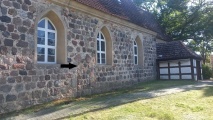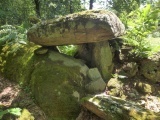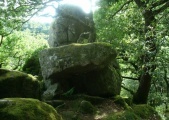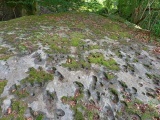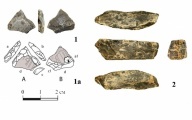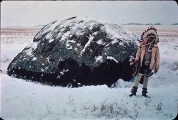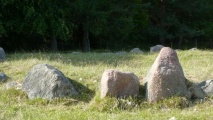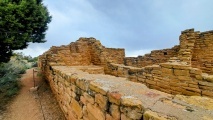Andy Burnham's Blog, page 18
July 1, 2025
Mahlstein Kirche Fredersdorf
In a bricked-up entrance on the south side of the church in Fredersdorf (Brandenburg) there is a prehistoric Quern stone. More photos on our page.
Published on July 01, 2025 09:01
Allée couverte de Pont-Bertho
Allée Couverte near Plaudren, Morbihan. #TombTuesday Unusual for this area and type of dolmen, one side is a gigantic long stone. There is a single capstone in place.
Published on July 01, 2025 01:08
June 29, 2025
Manchester Museum
Museum asks visitors if Egyptian woman’s body should be taken off display?. Museum in the City of Manchester which includes Egyptian artefacts, and prehistoric stone implements from many sites in the region, including Creswell Crags and Alderley Edge. Lots more on our page.
Published on June 29, 2025 09:42
Dewerstone
What looks to us like a 'proto dolmen', pictured here as part of a Dartmoor rock outcrop. Also stone walls and gaps known as a tor enclosure (a stone site which resembles a Neolithic causewayed enclosure), with later Bronze Age hut circles and hillfort. More about this complex site on our page.
Published on June 29, 2025 09:12
Harbourne Head Standing Stone
The Harbourne Head menhir, also known as the Harbourne Man, is situated west of the head of the Harbourne stream, SE Dartmoor. It leans at 10 degrees out of vertical, has with an OS bench mark cut into it, and a slight depression probably from being used as a rubbing post by cattle.
Published on June 29, 2025 04:34
June 28, 2025
Hexenstein St. Jakob
A large boulder (or Witch Stone) in Switzerland with natural cups, some looking like animal or human feet. Many local legends have been told about this stone. More photos on our page.
Published on June 28, 2025 10:39
Metz De Boz
A Palaeolithic archaeological site situated approximately 300 kilometres south of Kiev, Ukraine. Alternatively known as the Medzhybizh A site, this ancient site has yielded a variety of flint tools, but most notably, possibly the oldest ivory tools ever discovered. Eleven of the ivory artefacts showed clear evidence that they were modified for tool use, including sharp pointed ivory pieces. The site has been dated to at least 400,000 years before present. Likely ancient inhabitants of this site from the paleolithic period were H. Neanderthalensis (Neanderthals)
Published on June 28, 2025 10:17
June 27, 2025
Mistasiniy
A large glacial erratic deposited after the last ice age. The stone, thought to resemble a resting buffalo, is estimated to have weighed 400 tons and was a sacred site - not only to the Plains Cree, but to other First Nations who traversed the prairies. During the 1960s, when it became apparent the stone would be submerged by the rising waters of Lake Diefenbaker, efforts were made to save the mistasiniy. A long campaign led by the late Zenon S. Pohorecky, professor of anthropology and archaeology at the University of Saskatchewan, to move the rock to higher ground ultimately proved unsuccessful. Many believe a “quiet” decision was made to quell the lobby - on the morning of December 1, 1966, a crew from the PFRA (Prairie Farm Rehabilitation Administration) arrived with a reported 60 sticks of dynamite and reduced the millennia-old stone to rubble. This archive picture was taken with Tribal Elder Wilfred Tootoosis about a year before the stone was blown up.
Published on June 27, 2025 06:04
Laikenbuie Ring Cairn
Laikenbuie ring cairn is in the Clava tradition of monuments, but carbon dating indicates that it is early Iron Age, constructed over a thousand years after the original cairns. Were degraded older cairns being copied - there are many examples nearby - or were earlier traditions and similar ideologies passed down the generations. It is very hard to be certain.
Published on June 27, 2025 02:26
June 26, 2025
Mesa Verde - Far View House
A Chacoan style great house from the Pueblo 2 period (950 -1150 CE) in Colorado state. Like most great houses, it served as a community center for ritual and social activities. It was also possibly used as a central storage point for harvested produce. The people lived in room blocks in small villages dispersed around the great house. There were at least 50 villages in Far View, of which a handful have been excavated and restored and can be visited today.
Published on June 26, 2025 11:12

